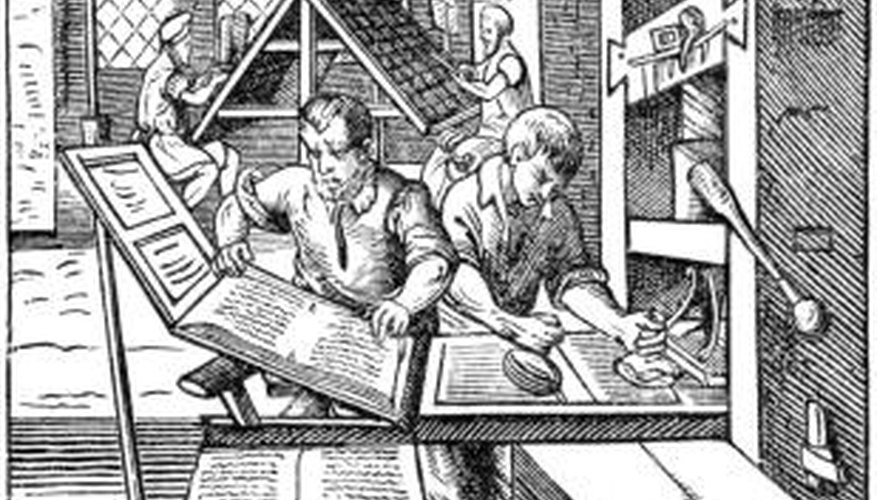Woodcut, a technique used as early as the 5th century, was the first means of mass-producing maps, illustrations and printing patterns onto textiles. A form of relief printing, it involves cutting and gouging out bits of negative space from a block of wood, which the printer afterwards inks using a non-porous roller called a brayer. The image then transfers to a substrate upon pressing. Today's artists use several alternative printmaking media, but woodcut nevertheless presents several advantages over comparable techniques such as intaglio and linocut.
Ease and Speed of Preparation
Depending on the size and the level of detail of the desired print, carving a woodcut block can take anywhere from a few hours to several days. This, however, is much faster than the time an artist would need to prepare a copperplate. Preparing a woodcut also requires far less skill, as wood is a forgiving medium. Linoleum, although very easy to carve, is a fragile material especially when heated, and mistakes must be carefully avoided to preserve the design.
- Depending on the size and the level of detail of the desired print, carving a woodcut block can take anywhere from a few hours to several days.
- Preparing a woodcut also requires far less skill, as wood is a forgiving medium.
Cheap Materials and Production Costs
Woodcut printing involves cheap and readily available materials -- namely wood, printing ink and a suitable substrate -- plus an array of tools: knives, chisels, gouges and a printing press. Choice woods include beechwood and cherry, but nearly any kind of wood will serve. Copperplate printing racks up costs first from the copper itself and then from production costs, as engraving or etching the pattern requires the labour of a skilled artisan. Linocut uses the cheapest material of the three, but it rarely produces as fine a quality and texture as a woodcut.
- Woodcut printing involves cheap and readily available materials -- namely wood, printing ink and a suitable substrate -- plus an array of tools: knives, chisels, gouges and a printing press.
- Copperplate printing racks up costs first from the copper itself and then from production costs, as engraving or etching the pattern requires the labour of a skilled artisan.
Durability
Woodcut has an edge over similar relief printing techniques because of the long-term durability of the block under the right conditions. While the stress of repetitively passing any template through a printing press will degrade its quality over time, woodcuts have a more robust quality than both copperplates and linoleum and can produce more prints. Linoleum, on the other hand, tends to crack with age.
Adaptability to Letterpress Printing
One particular failing of woodcut is the difficulty of carving small lettering into the template; however, a printer can easily incorporate a woodcut and a letterpress into a single framework by inserting movable type into niches carved into the block itself -- a technique that could not be accomplished effectively with copperplates. This simplifies and shortens the process and ultimately makes woodcuts even more versatile.
